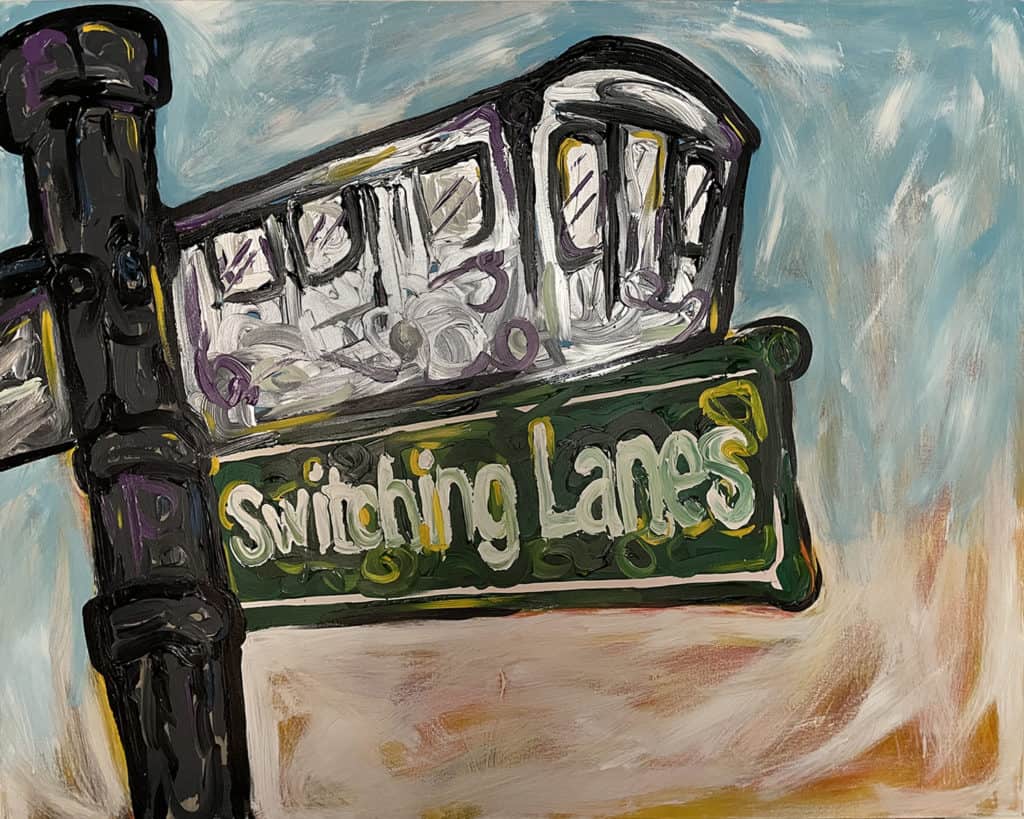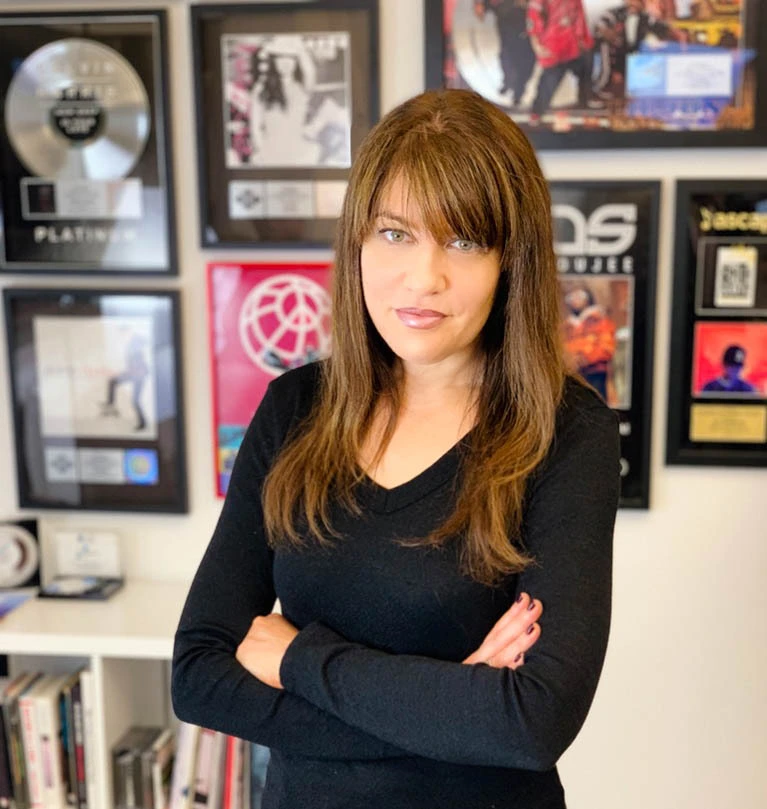Your cart is currently empty!
What’s Important About These Items
When you think about it, pretty much everything is the result of a collaboration. Where art is concerned, the village needed can be comprised of thousands of people or two people. When it comes to paintings by James A. Peterson, the concept began with him and his father. The resulting art is also made by two people, wherein James paints and the subject autographs. James paints two large-scale portraits of a person, and when they sign the paintings, he gives one of them – no strings attached – to the subject and James keeps the signed one. James told us, “I consider the signature to be a collaboration: not only are people marking my creative work with a seal of approval, they are also adding to it. Their signatures are both visual representations of their careers, they increase the cultural, and monetary, value of my work.”
This is a mutually beneficial activity. The name of James’s business – Brushes With Fame – reflects his appreciation and acknowledgement of what the opportunity means as he meets the people he paints and show his gratitude in a meaningful, tangible way. The subjects of James’s portrait duos are vast, with as many signed as sought: professional athletes (such as Michael Jordan, Ken Griffey Jr., and Kevin Garnett), entertainers (like Method Man, Killer Mike, and Rakim), icons (who include Boots Riley, Chuck D, and Yasin Bey), and “people who are genuine and significant in their talents and actions.”
James has generously given six paintings to the THHM, with four of the five portrait subjects have agreed to sign in exchange for receiving one, and the gift includes his depiction of the logo for celebrated docu-series “Switching Lanes,” produced and cast by Crystal Johnson. The Official Record of Hip Hop is honored to include in our Archives and Collections all of James’s donated paintings, including his depictions of DJ Kool Herc, April Walker, Easy Mo Bee, Pete Rock, and Chukes.
We are thrilled to share that all of James’s donated paintings, which are comprised of one painting and multiple digital images, will be included in the Hip Hop Museum’s VR experience, which is currently in development and led by the exceptional Michael Carnevale, Matt Medonis, and the team at Carnevale & Co.


James said, “It only seemed logical to make paintings of the progenitor of Hip Hop, Kool Herc.” While they’ve yet to connect, we hope our Spotlight on James will help one of Hip Hop’s bedrock MCs link with James. We can only cosign James when he declared, “DJ Kool Herc is the seed that has grown into Hip Hop, its culture, and made possible the THHM.”

Pioneering with the brand she created – Walker Wear – and beyond, April Walker was born to create and lead. This Brooklyn native was the first woman to soar in the fast-moving world of urban menswear. Business schools could teach her strategies in product placement, celebrity endorsements (read: Tupac Shakur, Biggie, RUN-DMC), distribution, and sales. James told us, “Streetwear fashion is now a multi-billion-dollar industry, thanks in large part to efforts and ideas by April and people like her.” Facts.

You may not know him, and you – we – know his work: Easy Mo Bee. As the producer of some of the most recognizable and longstanding music in Hip Hop’s Golden Age, Mo produced tunes whose popularity crossed genres and affected generations. He was born in Bed-Stuy (Brooklyn, NY) and raised in the neighborhood’s Lafayette Gardens housing projects. Mo’s production history through the decades includes work by Ced Gee of Ultramagnetic MCs, Marley Marl, the Juice Crew, L.L. Cool J, Big Daddy Kane’s It’s a Big Daddy Thing, GZA’s solo debut Words From the Genius, Miles Davis’s last studio album before his homegoing, Doo-Bop, Project: Funk da World by Craig Mack, “Runnin’ From tha Police” by ‘Pac, and that ain’t the half. James reminded us how Mo “produced nearly half of Ready to Die, and he is the only producer who worked with Biggie and ‘Pac while they were alive.”
Why James Donated These Items to the THHM
Anyone who believes in, listens to, and knows even a little bit about Hip Hop knows the genre, the culture and community, and the movement are rooted in innovation. Something that starts as a fad, becomes a trend, and doesn’t necessarily go on to be taught in schools and recognized as history in popular music and performing arts around the world. Hip Hop music and culture, as James puts it, “are popular culture, and the people I’ve painted had an enormous impact in shaping that.” We could not agree more, and the artists who are discussed next illustrate James’s point.

Called by James, and many other people to be sure, as “one of the most under-appreciated producers in Hip Hop history,” Pete Rock has a forever place in East Coast Hip Hop production. This producer-DJ-rapper, born in the Bronx, met his eventual recording partner CL Smooth during high school. Pete’s accomplishments include producing J Dilla’s posthumous album Jay Stay Paid, collaborating with, producing, and remixing Mary J. Blige, Rakim, Kanye West, Jay-Z, Raekwon, Ghostface, Nas, Public Enemy, Ghostface, and a list too long to include here. Additionally, Pete stands with A Tribe Called Quest, Gang Starr, and The Roots in their efforts made to bring funk music and jazz to Hip Hop and successfully fusing them.

While James acknowledges the slight departure from a direct connection to Hip Hop, he is absolutely correct when he identifies Hip Hop to be “a celebration of, and a tribute to, Black excellence and Black artistic expression.” And with that, James’s painting of sculptor Chukes is a perfect example of the significance of this Black artist, whose sculptures “tell the story of beauty, suffering, struggle, and the truth of the African diaspora.”
In James’s Words
“Growing up a small poor white kid in a multi-ethnic neighborhood in Milwaukee, I am glad that Hip Hop found me, and I found it. It made me feel cool and tough and hip. I don’t know if I was any of those, but thankfully the music helped me exude those things to a degree. I am unbelievably honored to be able to share gifts and collaborate creatively with some of the people who have had the biggest influence ever on Hip Hop music and culture. Then, to have those interactions and collaborations be installed in a museum dedicated to the music I have loved the most in my life brings me unspeakable joy.” – James A. Peterson
James’s work can be seen on his website, and his ever-growing portfolio can be witnessed and experienced at galleries around the United States and on his website, Instagram, Twitter, and Facebook.




